#Wilson's Storm-petrels
Explore tagged Tumblr posts
Text
I love these little birds and their magic origami counterparts so much 😭. There is so much care this crew and cast of creators puts into their storytelling!!
(I made this little Storm Petrel Appreciation Post via Instagram after the first episode of MisMag2, but then realized the lore would be better to share with the Tumblr homies lol 🤟🐐💞)
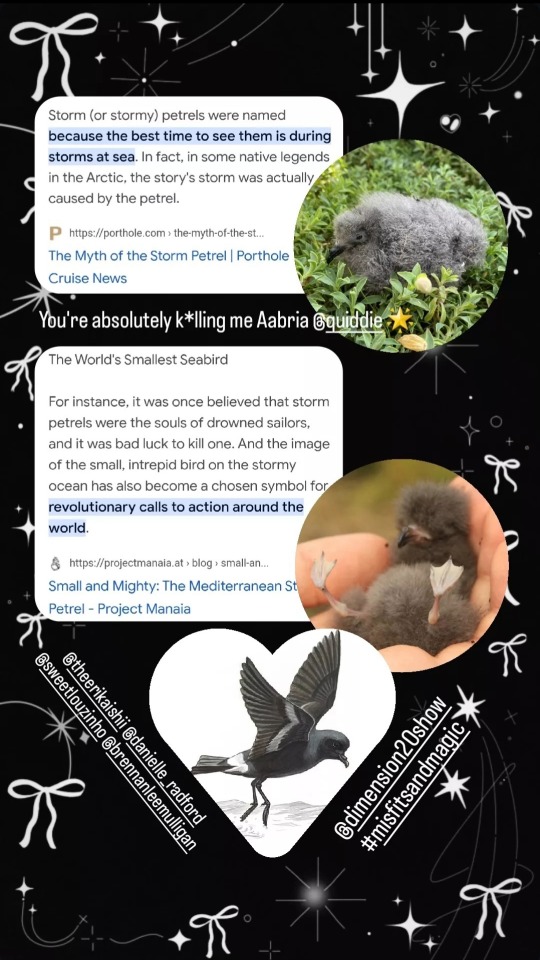
"Storm (or stormy) petrels were named because the best time to see them is during storms at sea. In fact, in some native legends in the Arctic, the story's storm was actually caused by the petrel."
"For instance, it was once believed that storm petrels were the souls of drowned sailors, and it was bad luck to kill one. And the image of the small, intrepid bird on the stormy ocean has also become a chosen symbol for revolutionary calls to action around the world."
#d20#dimension 20#mismag#mismag 2#mismag2#misfits and magic#misfits and magic 2#misfits and magic season 2#misfits and magic s2#aabria iyengar#erika ishii#danielle radford#lou wilson#brennan lee mulligan#storm petrel#bird facts#evan kelmp#dr boodle#doctor boodle#dr. boodle#dr. norman boodle#myth#seafaring#dnd#dungeons and dragons#kids on brooms#kids on bikes
29 notes
·
View notes
Text


Photo source
Map source
#poll#birds#wilson's storm petrel#procellariiformes#oceanitidae#oceanites#oceanites oceanicus#america#north america#south america#asia#erope#eurasia#africa#oceania#australia#antarctica
9 notes
·
View notes
Text
BOTD: Wilson's Storm-Petrel
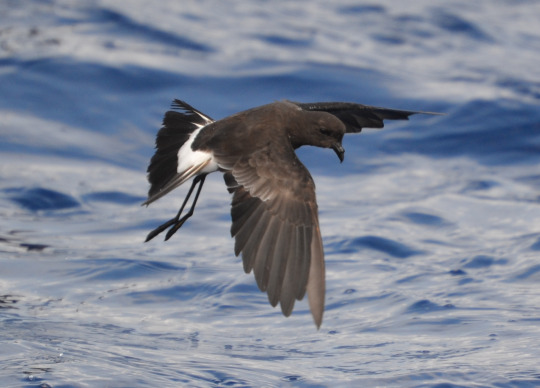
Photo: Joseph D Kurtz
"Despite its small size and seemingly weak flight, this bird is at home on the roughest of seas, flying in the troughs of the waves during gales. It also travels huge distances -- from the Antarctic to the edge of the Arctic. Although it nests only in far southern oceans, Wilson's Storm-Petrel is often the most common seabird off the Atlantic Coast of the United States."
- Audubon Field Guide
#birds#wilson's storm petrel#birds of north america#north american birds#seabirds#petrels#storm petrels#wilsons storm petrel#birds of the us#birds of canada#birds of the caribbean#birds of america#american birds#birding#bird#birdblr#birblr#bird watching#bird of the day#Oceanites oceanicus
19 notes
·
View notes
Text
sobs there's a lotta seabirds being reported over the past few days but can't go seawatching because family friends over for a few days 😭😭😭
#contact call#granted some sightings have been way off out at sea from a boat#but still plenty from the mainland!#some of the boat sightings yesterday included wilson's storm petrels and a sabine's gull 😭😭😭😭#i'm telling you a seabird pelagic trip would fucking fix me
2 notes
·
View notes
Text










My first pelagic! There were tons of other birds but I had trouble taking pictures. My setup isn’t fitted for this kind of birding haha
(8-24-24)
#take.flight#my photography#birding#wildlife photography#wilsons storm petrel#wilsons phalarope#northern gannet
0 notes
Text
My introduction!!
Hello! My name is Micaelyn. I’m female and a minor. I go by she/her! | I am a Lesbian | Welcome to my science-centric blog where I’ll be sharing an assortment of facts, extensive information, and artwork! Consider this blog as my info-dump haven.
Fixations / things I generally like
Science! But specifically: Marine biology, chemical oceanography, Microbiology and genetics.
Birds! I favor Turkey vultures, Greater roadrunners, Storm petrels (Wilson’s), Alcids, African+King penguins, Montezuma Quails, Kea’s and Kakapos. I also like bats. My favorite species is the Indian flying fox.
Killer whales (I love the southern residents) Fun fact: I adopted J-35 Tahlequah from the whale museum last year!
Elasmobranchs, particularly Bluntnose Six-gill, Bamboo, and Scalloped Hammerhead sharks, as well as Spotted Eagle rays. Cephalopods also intrigue me, with the blanket octopus being my favorite.
The Geologic Time Scale, especially the Cambrian and Carboniferous period. I’ve committed to memory most of the Eras and periods within the Phanerozoic Eon! I love learning about earths evolutionary history :3
Dinosaurs! My top three are Carnotaurus, Spinosaurus and parasaurolophus!
I love Nature photography! I am a nature photographer myself, I photograph mostly birds but I've also photographed different whales and flowers. I shoot with a Canon EOS R7 paired with the RF 100-500mm lens.
Fun facts about me
I’m a Pisces (Birthday is March 1st). I can speak a little Norwegian. I am a nature informed illustrator. I collect shark teeth, shells and other coastal items. Lastly I volunteer at an aquarium and I’m a member of the Florida Young birders club.
My tags
Art: #Micaelyn art
Info-dumping: #Micaelyn info dumps
Inbox msgs: #Micaelyn inbox
Marine biology#Marine biology
Check for more specific tags by searching my blog!
Socials
TikTok: https://www.tiktok.com/@moonsnails_?_t=8qq7tnshYh4&_r=1
Instagram: https://www.instagram.com/_moonsnails/profilecard/?igsh=bzU5MHVjZ3prMjIx
Pinterest: https://pin.it/581OVjYUY
Letterboxd: https://boxd.it/bdTNX
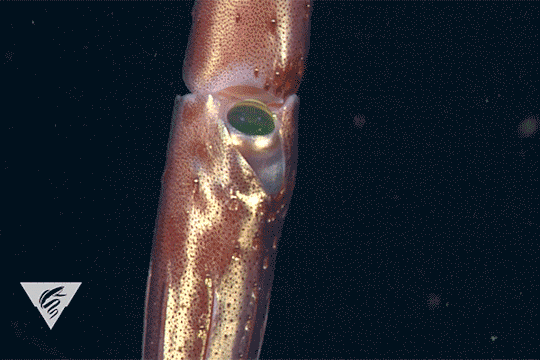
#introduction#science#scienceblr#marine biology#birds#ornithology#art#bats#nerd#nature lovers#science nerd#stemblr
15 notes
·
View notes
Text
Exotic and endangered birds
All screenshots and bird info from: https://www.ifaw.org/uk/journal/18-most-endangered-birds

Why is the yellow-crested cockatoo endangered? The yellow-crested cockatoo, a medium sized white parrot native to Indonesia and Timor-Leste, is critically endangered. There are an estimated 1200-2000 individuals remaining in the wild, and their population is sadly still decreasing. The yellow-crested cockatoo’s decline is primarily due to cage-bird trade and trafficking, which effectively became illegal in 1994 after being included in Appendix I of CITES; however, illegal trapping of these birds continues in many areas. Because they breed in large tree hollows, logging and agriculture also indirectly threaten their survival.

Are Amazon parrots endangered? Out of 36 species of Amazon parrots assessed by the IUCN, five are endangered and four are critically endangered, namely the imperial Amazon, lilacine Amazon, Puerto Rican Amazon, and yellow-naped Amazon. Two species have gone extinct—the Guadeloupe Amazon and the Martinique Amazon.

What is a nuthatch? Nuthatches are a genus of birds with large heads, short tails, and strong, pointed beaks. Most species are blue-grey with black eyebrows. Bahama nuthatches have brown heads and white underbellies.

What is the mangrove finch? The mangrove finch is a species in Darwin’s finch group, part of the tanager family, with dull brown, olive-toned, and white plumage. It’s native to the Galápagos.

What is a bunting? Buntings are a family of passerine (perching) birds from Europe, Asia, and Africa. Related to finches, they eat seeds and are commonly recognised by their typically brown, streaked feathers and bold markings on their heads.

What is the New Zealand storm petrel? Native to the waters between New Zealand’s North Island and eastern Australia, the New Zealand storm petrel is a small seabird. Similar to the more common Wilson’s storm petrel, it has a black head, wings, and tail and a bright white stripe around its back. This bird only comes to land to breed and spends the rest of its life at sea.
There are a lot more birds and information on the website i listed and it makes me really upset that so many birds have gotten to this point of near extinction and a lot of it is because of humans. deforestation leads to birds loss of habitat. even environmental factors, if a species environment is no longer a liveable space for that animal a person could make the point that if an animal cant live in the place they live in then its the animals 'fault' for not adapting to their environment, but due to humans effect on the planet a lot of the time that changes the environment to quickly for the species to keep up.
i wanted to make my world somewhat realistic so i wanted to have a look at endangered birds to find one i could use as the one that 'bird man' is protecting but after looking through the pictures and info i have decided to change him up a bit, he's not just protecting one bird, he's protecting as many endangered birds on his giant ship as he can. i think that would be a lot mor interesting and fit his character better, as he's meant to be a strong but kind man.
0 notes
Text
Days 37 and 38 - Charcot and Sims Islands - and more
Charcot Island
Day 37, Saturday, 21 January 2023
I took a sleeping pill and slept like a baby until 5.30 – wonderful not to be up half a dozen times during the night coughing my lungs out. We woke up properly with a cuppa at a bit after 7 am and threw back the curtains to see a seemingly never-ending low dome of snow glinting in the sunshine half a league ahead. Stunningly beautiful and reaching as far as we could see ahead of us. It was the northern end of Charcot Island but it took a while to figure out what it was. We were sailing into a huge bay and it took us a couple of hours, following the western coast to the ‘end’ of the bay, before turning around and following the north and west coast out of the bay and thence due south for the rest of the day.
I saw four species of bird during breakfast – the stunning black and white Cape Petrel (unmistakeable), the snowy white Snow Petrel (so beautiful and surprisingly common down here - easily the most common bird we see on board), the dramatic and obliging Antarctic Petrel (our third sighting ever, but much better because it glided gently past our window twice as we sat there) and the lovely Soft-plumaged Petrel (a lifer for us and another very obliging bird that flew parallel with us outside the window three times, once very close to ensure we could see every detail and make the identification absolute!). A pretty exciting breakfast!
We spent a couple of hours in the Observation Lounge and the Bridge, sailing through clear water, then through many square kilometres or brash with one or two seals on every growler big enough to hold them. There were Snow Petrels everywhere and quite a few dainty Wilson’s Storm-petrels – probably both outnumbered by the dozens of seals. The scenery was spectacular, with ice and mountains on every side as we sailed slowly along the coast of the bay until we reached the end and turned to follow the other side of the bay back into open water. There is not a lot of value in trying to explain it – you simply have to be there to enjoy the majesty, the grandeur, the beauty, the isolation, the mammoth proportions…….. I will desist but…….!
There was a call late in the morning that a pod of whales had been seen so we rushed out to see them. Nada! Absolutely nothing. Maybe someone saw a blow, but equally, someone may just have been encouraging us to get out for some exercise instead of lazing around in our cabins. An hour later, there was another call and we did see a couple of distant blows from the Observation Lounge, but we then had a wall of Ponant jackets in front of us as people crowded along the deck in front of the Lounge and we couldn’t see anything between their legs. But then, we have seen plenty of whales before so decided that lunch was a better option.
We ate lunch in the Snackery – on the aft deck, just outside the restaurant where we usually dine. It is a bit more casual and has a different range of food, mainly fast food, some of which they will cook for you on the spot – hamburgers, etc. We had crumbed prawns, home-made spring rolls and arancini balls on the outer deck – then went right back for another delicious dose with a few variations this time. It was a bit cold out there – it certainly chilled our white wine (as much booze as you want all day and night, all included on this ship) – but most of the seats are heated (even all the deck seating it heated - perhaps too much so) and there are perspex wind shields around most of them, so we enjoyed the solitude and the food in comfort, while the ship zigzagged around chasing the whales that I assume everyone else enjoyed instead.
I worked on my blog and photos for a couple of hours and then went down for a one-on-one session with one of the two professional photographers on the expedition team. I picked up a few tips, probably enough to encourage me to explore a few more of the trillion features of my great new camera.
Our Expedition Leader gave a great lecture about Charcot (a little about the father, a lot about the son, for whom our ship is named). She is a passionate Charcot aficionado and had lots of interesting snippets about him and his achievements as well as some anecdotes about her own contact with the family. The lecture was delayed because everyone was outside photographing a massive iceberg a couple of hundred metres away. The Captain said it was ninety metres high and it looked every inch of it. Due to the lateness, the recap was deferred and we just had a short briefing about the plans for tomorrow. It sounds exciting.
I went down to a concert in the mid-evening. There is a Colombian pianist as part of the team who tinkles away a lot on the electric piano in the Observation Lounge and it is quite delightful, but she is also a concert pianist and she performed a great classical concert. Heather was tired and didn’t come with me, but I was keen and enjoyed it immensely. It was a mixture of a few very well-known pieces, a few lesser-known ones, and one that was her own composition – all really wonderful music.
There are also at least two more musicians on the team (I think more) - one that plays guitar and sax and another who is a whiz on his electric harp.
Sims Island - and more
Day 38, Sunday, 22 January 2023
What a day it was! I slept like a baby again – without any chemical assistance – and could have slept even longer. But we were up reasonably early because we were making a landing a bit after 9.30. We were in the Carroll Inlet surrounded by ice of every description, including mile after mile of stunning ice-cliffs twenty or thirty metres high. In the middle of all the snowy white, we made for the black monolith of Sims Island, the massive plug of an ancient volcano and now the home of 15,000 breeding pairs of Adelie Penguins. It was a beautiful sunny day although the wind was pretty biting.
We were ferried to the shore by zodiac and made a slightly challenging wet landing with seals and Adelies everywhere. The seals were mainly Crabeaters that didn’t even raise an eyebrow when we walked past and there were penguins everywhere, as fascinated by the strange human creatures as we were of them. There were lots of skuas around, including some sitting on their own eggs. They appeared to be all South Polar Skuas although I thought I saw a couple of Brown Skuas first up in the morning.
We walked quite a long way up the hill through the colony with the skuas wheeling around and the penguins waddling around through the humans, gawking at us as we gawked right back at them. We are supposed to stay at least 5 metres from all wildlife, but that is quite impossible, particularly when they walk right up to us. We were constantly aware of the monumental black-brown mountain looming over us and we chatted for a while with the geologist on the team. She is great and has an enormous amount of knowledge about geology, but also the Antarctic in particular, including the wildlife. We eventually had to return to the ship for lunch and for it to move to a new location for our afternoon adventure.
They sent out the on-board helicopter to scout for a suitable landing place on the ice and in due course, the ship moved close to the ice-shelf quite deep into an ice lead, and we were off again in the zodiacs to walk on the crunchy snow. Both the morning and afternoon landings were interesting because they sped up the zodiacs for the last few metres and put the front half of the craft right up on the beach and snow. It probably made getting off the zodiac safer, but the steep angle of the craft made it a big step for some people to alight and reboard. For a fit youngster like me, I had no trouble and spurned the assistance of the two crew members always at hand to almost carry us to shore if necessary.
Our walk on the snow was spectacular. We could have gone on quite a long walk but we just enjoyed being around the nearby scattering of seals – Crabeaters and a few Weddells. There were a few Adelies and one lone Emperor Penguin – a bit far away, but still easy to see with my camera or binoculars. The snow was very crunchy and we were often ankle-deep or more as we sank through the top layer, but everything was absolutely pristine, snowy white (obviously) and quite marvellous. There was a romance about it that I simply couldn’t deny. Quite a few people fell over when their feet went through the top layer and I had to help a couple of them up again. Interesting that so many people don’t have the strength to stand up again when they even just have a minor topple, usually with just one knee on the snow, and it takes two strong people to lift them back onto their feet. It was sunny and still and the sky was incredible streaked with all the colours you can imagine. Of course, we had sunlight 24 hours a day where we were – about 78 degrees south – and the stillness and silence were awe-inspiring. We have walked on snow before, but there was something very special about being there, so far south and with such a small number of people.
During quite a bit of the day, particularly the afternoon and evening, the sea was absolutely flat, not the tiniest ripple to ruffle the mirror – until a zodiac roars through it and sends waves a hundred metres away – and suddenly, it is a mirror again.
We had a short zodiac cruise on the way back to the ship and came across three Crabeater seals cavorting around a bergybit close to the ship. We got up to less than five metres from them and they kept popping up to look at us before submerging and immediately coming up for another look. We sat there interacting with them for a very intimate ten minutes or more before we were summonsed back to the ship for showers and a late dinner at about 9 pm or after. I finally got my Police report during the evening – only took them 39 days (they say ALL checks will be completed within a maximum of 30 days and Heather’s that was lodged at the same time as mine took less than 48 hours). Now we wait on our Chilean visas!
I spent a bit of time during the day watching the ship plough through some loose ice, mainly brash, but with lots of growlers and a few bergybits and bergs that they avoided. The ship is a Class PS (don’t ask me) rated to crunch through 2.8 metres of ice (very slowly) but we just powered our way through the loose stuff, shoving it aside, rolling it over and over – but when we hit a bigger one head on, there was a big thump and often a few ‘rifle shots’ as the growlers were shattered into several pieces. Quite impressive to watch and I am itching to see when we start crunching through fast ice (solid ice that is not fragmented).
0 notes
Photo

Wilson's Storm-Petrel (Oceanites oceanicus)
© David Wingate
7 notes
·
View notes
Text

4 notes
·
View notes
Text
List of Birds organized by Order + locations:
Accipitriformes:
Bearded vulture
Cooper's hawk
Osprey
Red-shouldered hawk
Steller's sea eagle
Anseriformes:
Bar-headed goose
Barnacle goose
Black swan
Common merganser
Red-breasted goose
Snow goose
Trumpeter swan
Apodiformes:
Common swift
Ruby-throated hummingbird
Bucerotiformes:
Eurasian hoopoe
Cariamiformes:
Red-legged seriema
Casuariiformes:
Emu
Southern cassowary
Cathartiformes:
Black vulture
Turkey vulture
Charadriiformes:
American oystercatcher
Atlantic puffin
Black-headed gull
Black skimmer
Black-tailed godwit
European herring gull
Killdeer
Northern lapwing
Ruddy turnstone
Ciconiiformes:
White stork
Columbiformes:
Common wood pigeon
Eurasian collared dove
Luzon bleeding-heart
Nicobar pigeon
Victoria crowned pigeon
Coraciiformes:
Blue-capped kingfisher
Common kingfisher
Cuculiformes:
Asian koel
Greater roadrunner
Yellow-billed cuckoo
Eurypygiformes:
Kagu
Falconiformes:
American kestrel
Common kestrel
Galliformes:
Palawan peacock-pheasant
Scaled quail
Western capercaillie
Gaviiformes:
Common loon
Gruiformes:
American coot
Australasian swamphen/pūkeko
Blue crane
Common moorhen
Sandhill crane
Sora
Whooping crane
Passeriformes:
American bushtit
American robin
Australian raven
Baltimore oriole
Barn swallow
Black-billed magpie
Black-capped chickadee
Black-throated sparrow
Blue-headed vireo
Blue jay
Bluethroat
Brown thrasher
California towhee
Canada warbler
Canyon wren
Cedar waxwing
Common blackbird
Common chlorospingus
Common raven
Eastern wood pewee
Eurasian blue tit
Eurasian bullfinch
Eurasian golden oriole
Eurasian jay
Eurasian magpie
European robin
Goldcrest
Great-tailed grackle
Great tit
Hooded crow
House sparrow
Indigo bunting
Kirtland's warbler
LeConte's sparrow
Long-tailed tit
Mexican jay
Painted bunting
Phainopepla
Pine siskin
Pin-tailed whydah
Pinyon jay
Pygmy nuthatch
Red winged blackbird
Rook
Saltmarsh sparrow
Satin bowerbird
Spotted towhee
Steller's jay
Tufted titmouse
Wallcreeper
Warbling vireo
Western tanager
White-breasted nuthatch
White-throated dipper
White-throated magpie-jay
Yellow-rumped warbler
Pelecaniformes:
Brown pelican
Great blue heron
Great egret
Great white pelican
Least bittern
Roseate spoonbill
Shoebill stork
Snowy egret
Phoenicopteriformes:
American flamingo
Chilean flamingo
Piciformes:
Acorn woodpecker
Clark's nutcracker
Lewis's woodpecker
Northern flicker
Pileated woodpecker
Red-bellied woodpecker
Red-headed woodpecker
Podargiformes:
Tawny frogmouth
Podicipediformes:
Pied-billed grebe
Procellariiformes:
Wilson's storm-petrel
Psittaciformes:
Australian king parrot
Chestnut-fronted macaw
Citron-crested cockatoo
Cockatiel
Galah
Gang-gang cockatoo
Pacific parrotlet
Red-masked parakeet
Rose-ringed parakeet
Sulphur-crested cockatoo
Strigiformes:
Barn owl
Barred owl
Eurasian eagle-owl
Suliformes:
Anhinga
Blue-footed booby
Double-crested cormorant
Trogoniformes:
Elegant trogon
Locations:
Africa
America
Antarctica
Asia
Australia
Central America
Eurasia
Europe
North America
Oceania
South America
7 notes
·
View notes
Text
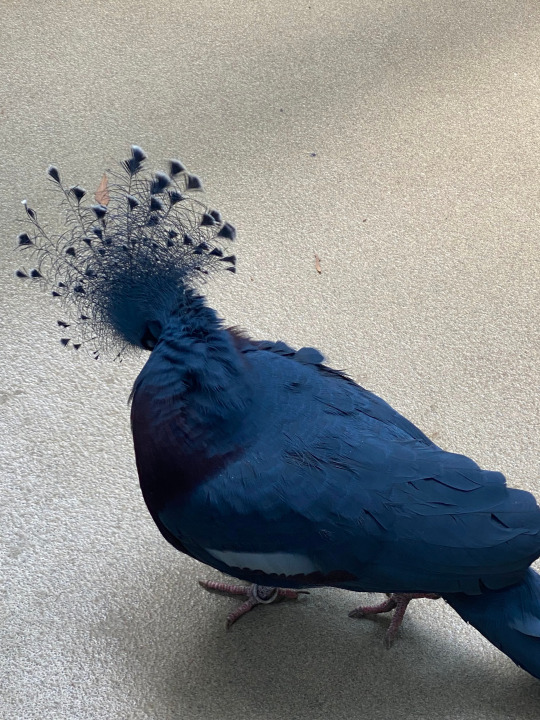


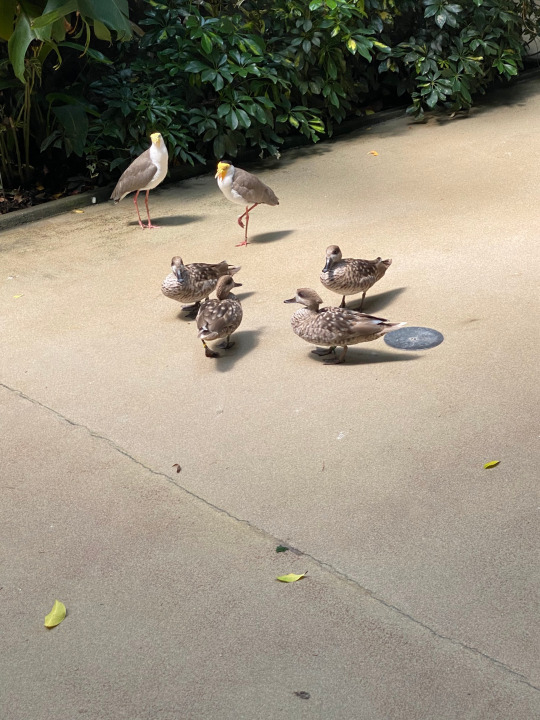
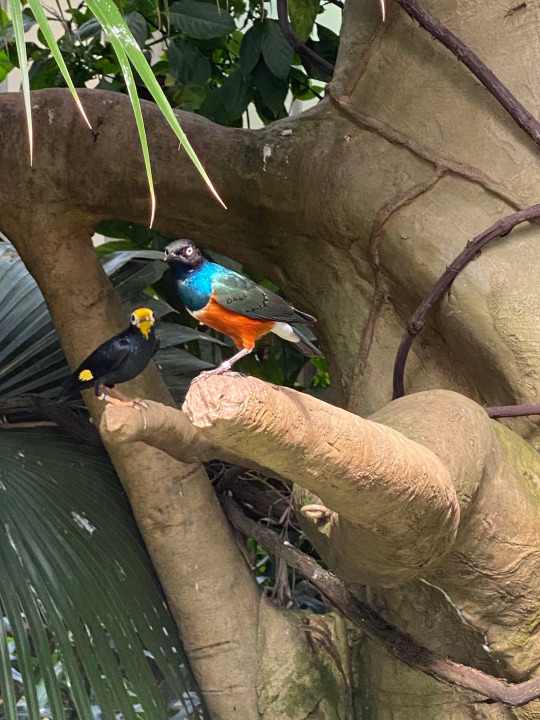

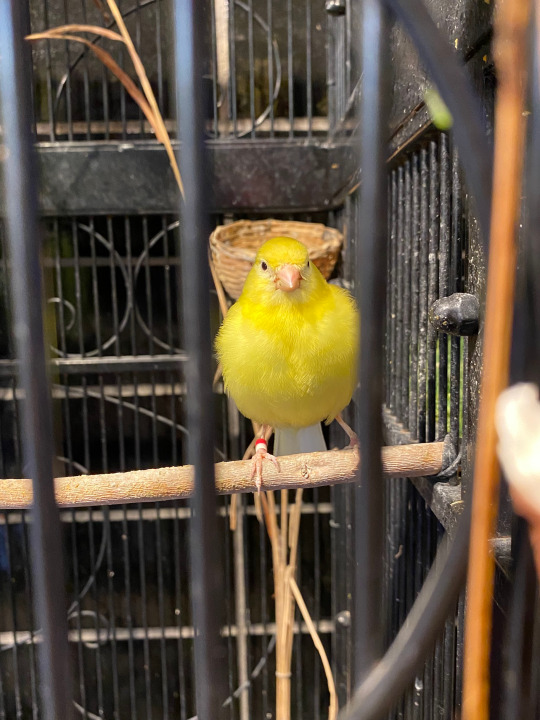
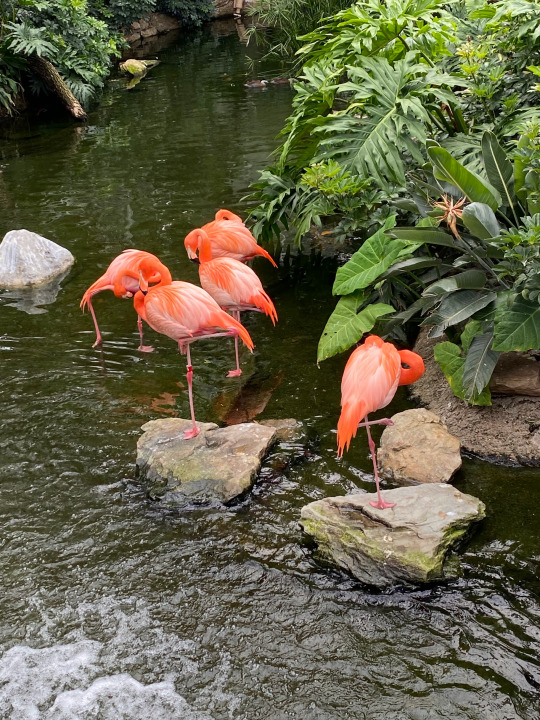

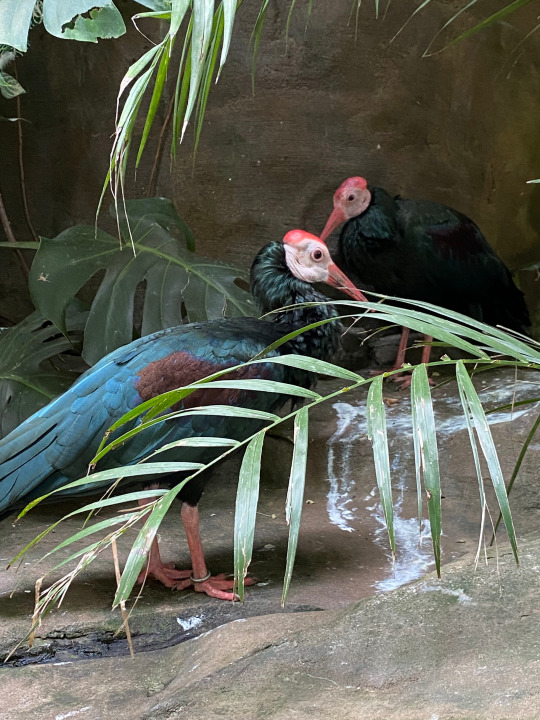


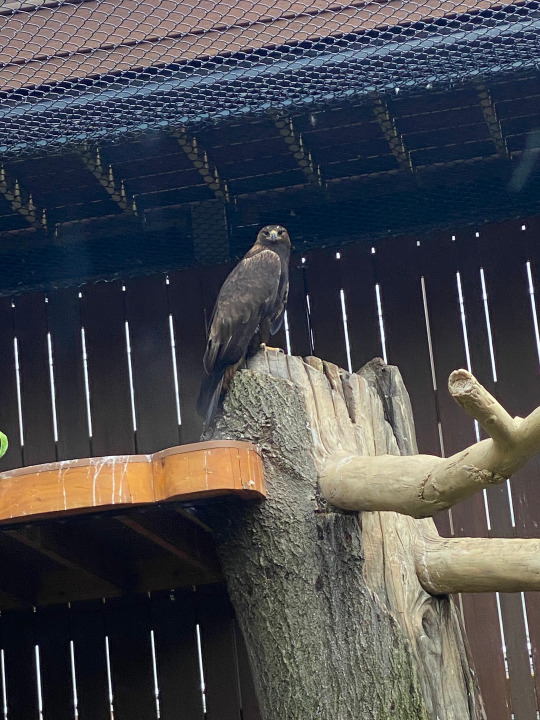


As promised, here are some photos from the national aviary in Pittsburgh! Saw lots of wonderful birds there.
I also took a boat tour up in Maine and saw lots of Atlantic puffins! I also saw some razorbills, common eiders, common loons, Wilson's storm-petrels, an Arctic tern, and a black guillemot. And plenty of gulls of course!
#not a botd#birdventures#national aviary#pittsburgh#maine#victoria crowned pigeon#snowy egret#luzon bleeding heart#masked lapwing#marbled teal#golden crested myna#african penguin#atlantic canary#american flamingo#red siskin#southern bald ibis#hooded merganser#sunbittern#toco toucan#golden eagle#blue billed curassow#king vulture
27 notes
·
View notes
Text
everyday i daydream about going seawatching or on a pelagic in the pacific and southern oceans...so many tubenoses in those parts of the world
#contact call#met a guy from australia a while back who'd been to aotearoa and other neat places around there#and i was seething with jealousy as he told me all the seabirds he'd seen down there#albatrosses and giant petrels and he'd been to a shearwater colony too hhhhhrrrrgggggg#i Will make it down there one day. i Will#for the time being i am looking forward to seawatching season this year#hope more cory's and great shearwaters pass by this year....#i hope i can get some leach's or maybe even wilson's storm petrels too
4 notes
·
View notes
Text
Picking around for Irene Comprehension and i think there is def something to be used from the description of Leach's storm petrels from Audobon. Like, look, (emphasis mine):
A small dark seabird that flies low over the water with erratic, bounding wingbeats. Unlike Wilson's Storm-Petrel, it seldom follows ships. Nests on islands off both coasts of North America, most commonly off eastern Canada. Silent and usually solitary at sea, it becomes very vocal when visiting its nesting islands at night, filling the darkness with spooky chattering, trilling, and sputtering cries.
10 notes
·
View notes
Note
What’s your favorite kind of bird? :3 (it might be in ur intro post but I’m to lazy to look)

My favorite bird is the Wilson’s Storm Petrel!! I’ll do a post on them soon :3
4 notes
·
View notes

